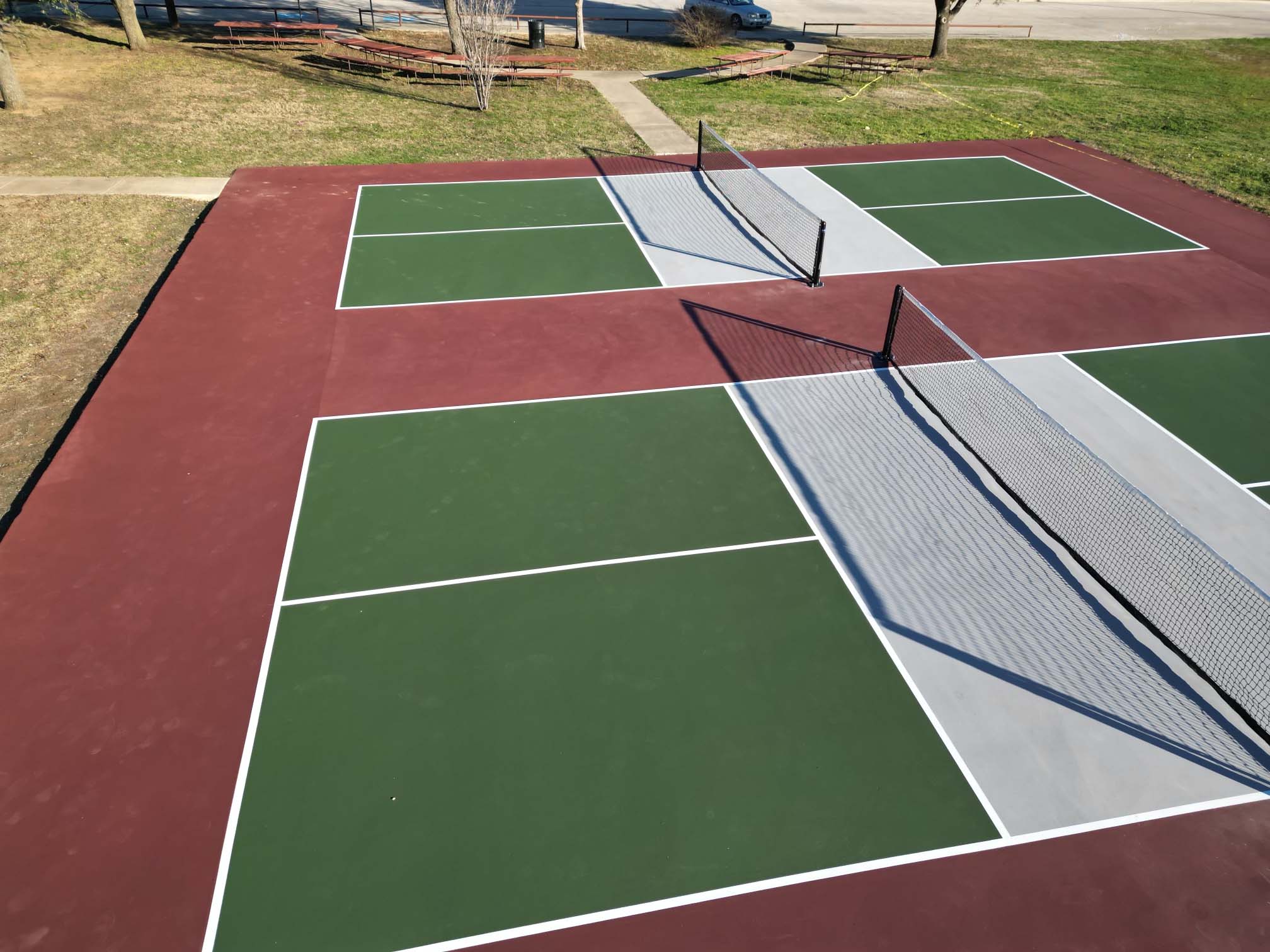Pickleball Court Construction Price Guide-- What to Anticipate
Pickleball Court Construction Price Guide-- What to Anticipate
Blog Article
Sustainable Practices in Pickleball Court Building And Construction You Need To Know
As the appeal of pickleball remains to climb, so as well does the requirement for lasting techniques in court building. This strategy not only addresses ecological worries however also improves the long life and functionality of the courts. From selecting environment-friendly materials to carrying out effective drainage and energy-saving lighting services, there are various methods to think about. The impact of these practices expands far past the court itself. Comprehending exactly how each aspect adds to an extra lasting future welcomes further expedition right into the complex balance between leisure development and ecological stewardship.
Choosing Eco-Friendly Materials
Picking environment-friendly products is a crucial action in the construction of lasting pickleball courts. The choice of lasting products not only reduces environmental impact but likewise boosts the durability and efficiency of the court. Trick materials include reused rubber for the surface, which uses excellent toughness and shock absorption while drawing away waste from garbage dumps.
Additionally, using in your area sourced products decreases transport emissions and sustains regional economic climates. Pickleball court construction. As an example, utilizing indigenous hardwoods for fencing and seating can supply a lasting visual while guaranteeing resilience versus the elements.
Including permeable products for court structures can further add to sustainability by permitting for natural water drain and minimizing runoff. These selections not just safeguard regional environments but additionally promote healthier play environments.
Efficient Drainage Solutions
While the selection of environment-friendly products is crucial, implementing effective drain solutions is just as crucial for maintaining lasting pickleball courts. Appropriate drain not only protects the court surface from water damages however also reduces erosion and overflow, advertising ecological honesty.
Effective water drainage systems can include absorptive paving, which permits water to penetrate the ground as opposed to merging externally. This reduces the possibility of standing water, which can bring about mold and various other upkeep problems. Additionally, incorporating purposefully put drain channels and swales can direct excess water away from the court location, making sure a dry playing surface and preventing soil disintegration.
Utilizing native greenery in the landscaping around the courts can better enhance water drainage by taking in excess water and decreasing overflow. These plants call for much less watering and promote biodiversity, lining up with lasting methods.
Additionally, it is crucial to on a regular basis keep the drainage system to ensure its lasting efficiency. This includes cleaning particles and monitoring for blockages. By focusing on effective drain services, pickleball court contractors can substantially add to the sustainability and long life of the facility, eventually benefiting both gamers and the setting.
Energy-Efficient Lighting Options
As the demand for pickleball proceeds to expand, incorporating energy-efficient lights alternatives right into court design has actually come to be significantly essential for sustainability. Traditional lighting systems typically eat excessive energy, adding to greater functional expenses and ecological effect. Consequently, adopting contemporary, energy-efficient modern technologies is necessary for both new buildings and remodellings.
LED (Light Emitting Diode) illumination stands apart as a top option because of its longevity and energy cost savings (Pickleball court construction). Contrasted to traditional lights, LEDs make use of approximately 75% less energy and can last approximately 25 times longer, substantially minimizing upkeep prices. The directional nature of LED lighting reduces light pollution, guaranteeing that illumination is focused on the court rather than bordering areas.

Sustainable Surface Area Alternatives
Exploring sustainable surface area choices for pickleball courts has actually obtained grip amongst players and builders alike. The focus on eco-friendly products not only lines up with the growing environmental understanding however likewise enhances the efficiency and resilience of the courts.
One prominent option is making use of recycled rubber, which can be sourced from utilized tires. This material gives exceptional shock absorption, decreasing the risk of injuries for gamers while promoting sustainability. Additionally, modular floor tiles made from recycled plastics provide an additional practical option. These floor tiles are simple to install and replace, and their flexibility allows for different court configurations.
Natural turf courts are likewise becoming a lasting option, promoting biodiversity and decreasing the heat island effect. However, they require regular upkeep and water, which might not straighten with all sustainability objectives.

Water Preservation Methods

Another efficient technique involves the installation of rain harvesting systems. These systems save and collect rainwater for use in keeping court surfaces and landscape design. This method not just conserves potable water but additionally lowers dependence on municipal sources.
Moreover, utilizing drought-resistant landscape design around the courts is vital. Native plants call for less water and are better adapted to local climate conditions, thus decreasing general water usage. In addition, making use of efficient irrigation systems, such as drip irrigation, guarantees that water is provided directly to plant roots, lessening dissipation and waste.
Conclusion
Incorporating sustainable techniques in pickleball court building and construction considerably adds to ecological conservation and source efficiency. By prioritizing these techniques, the construction of pickleball courts can align with wider ecological objectives while advertising long life and capability within communities.
As the appeal of pickleball continues to rise, so too does the need for sustainable methods in court building.Selecting green products is a critical action in the building and construction of lasting pickleball courts. By prioritizing energy-efficient lighting options, pickleball court producers can add to a much more sustainable future while fulfilling the demands of players and stakeholders alike.Integrating sustainable surface choices not only enhances the see this website efficiency of pickleball courts however also leads the means for carrying out effective water preservation techniques.Including lasting practices in pickleball court building and construction substantially contributes to ecological preservation and source efficiency.
Report this page